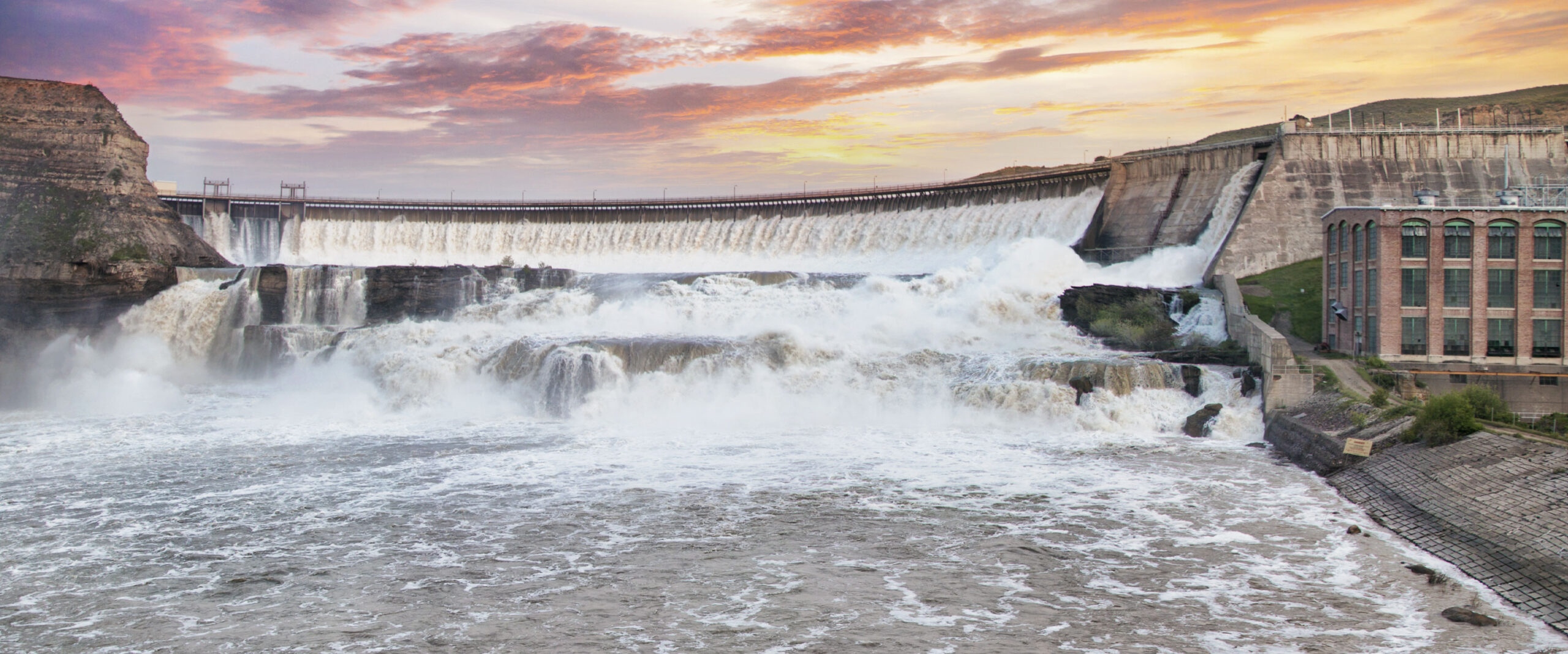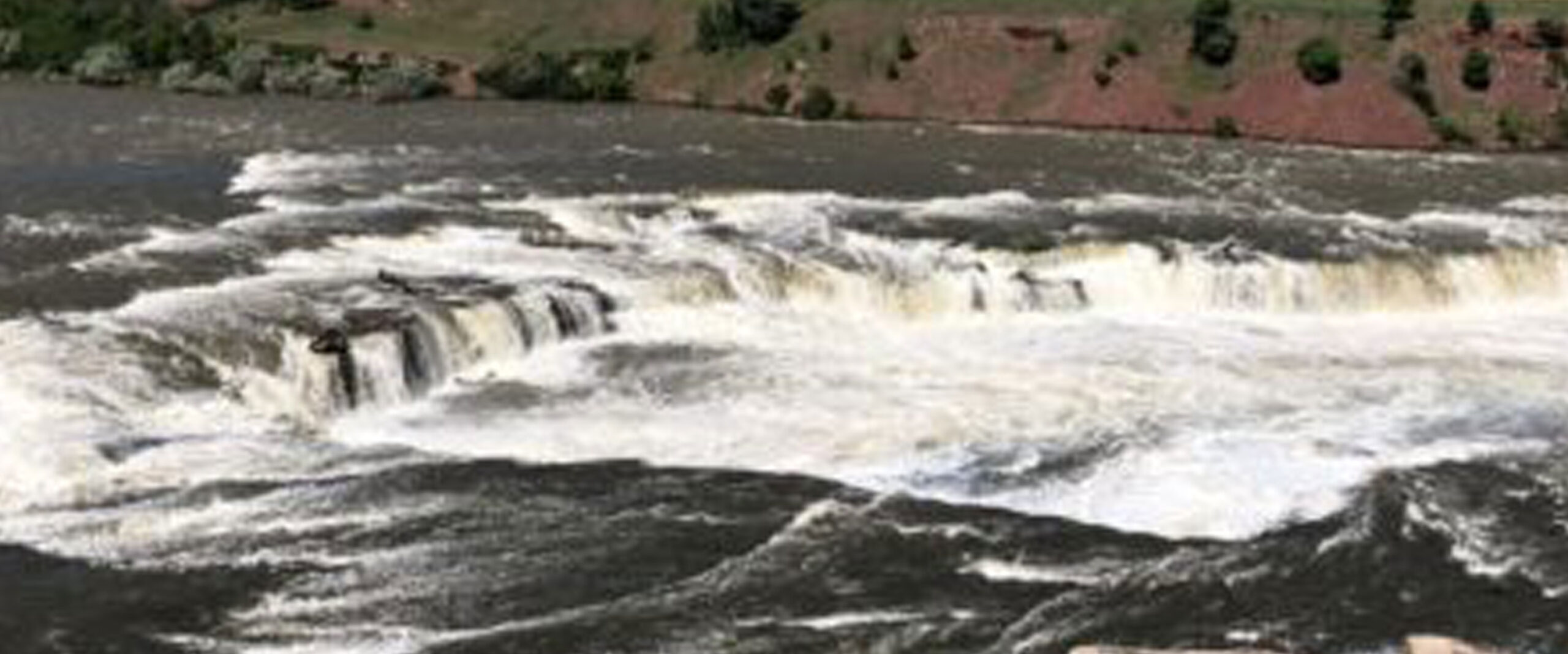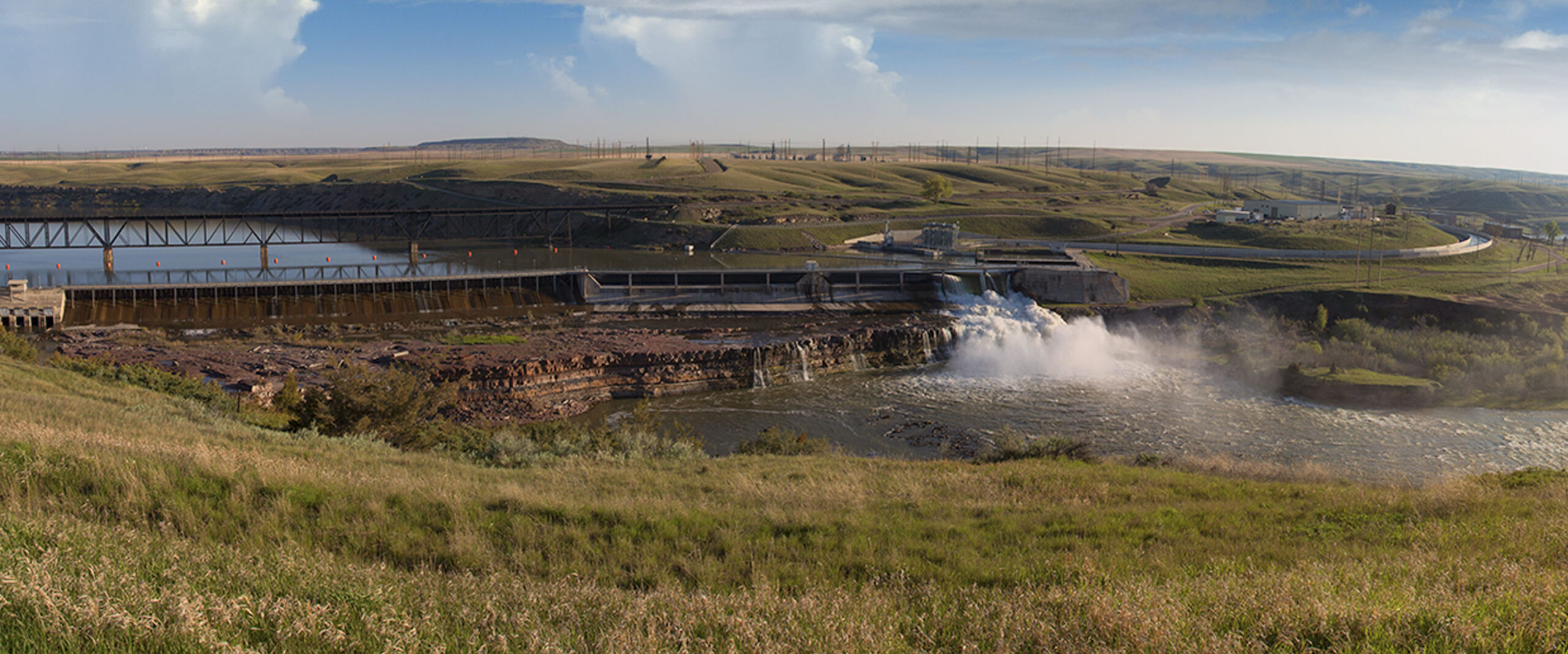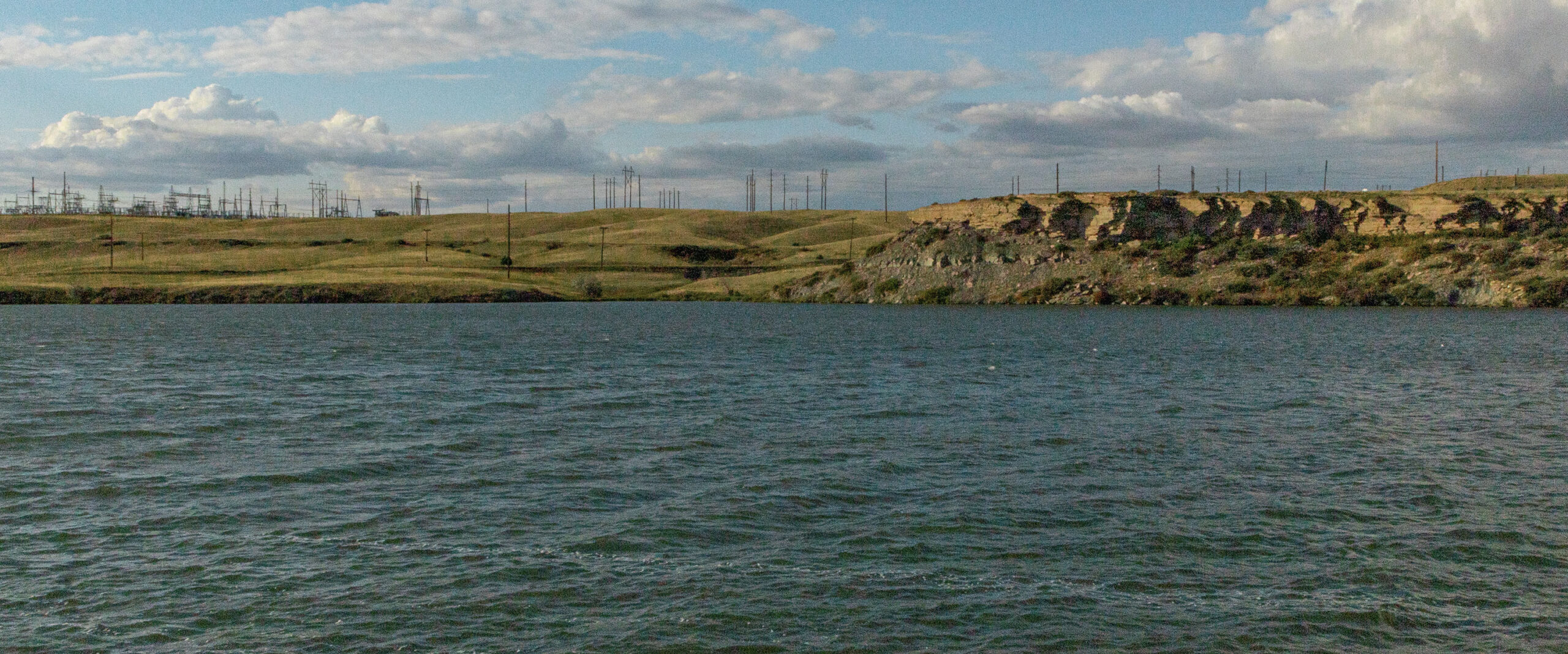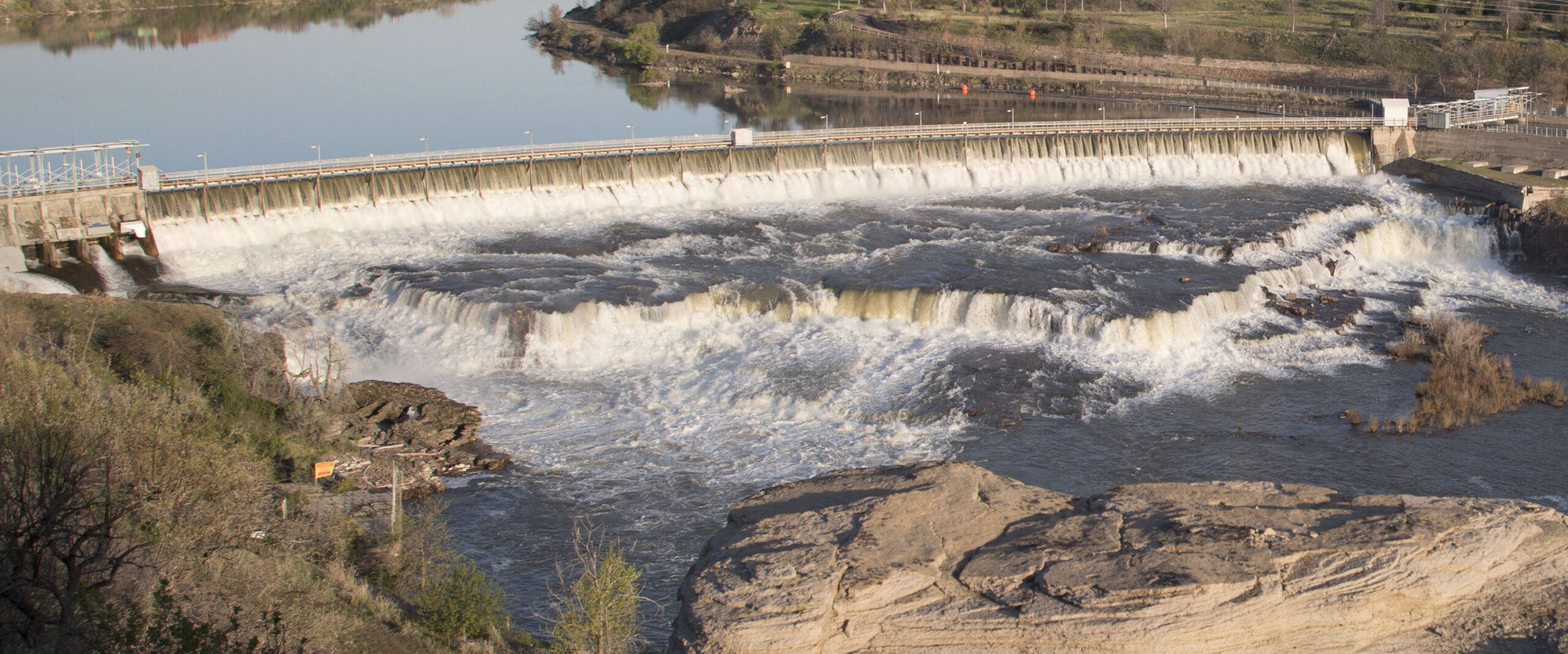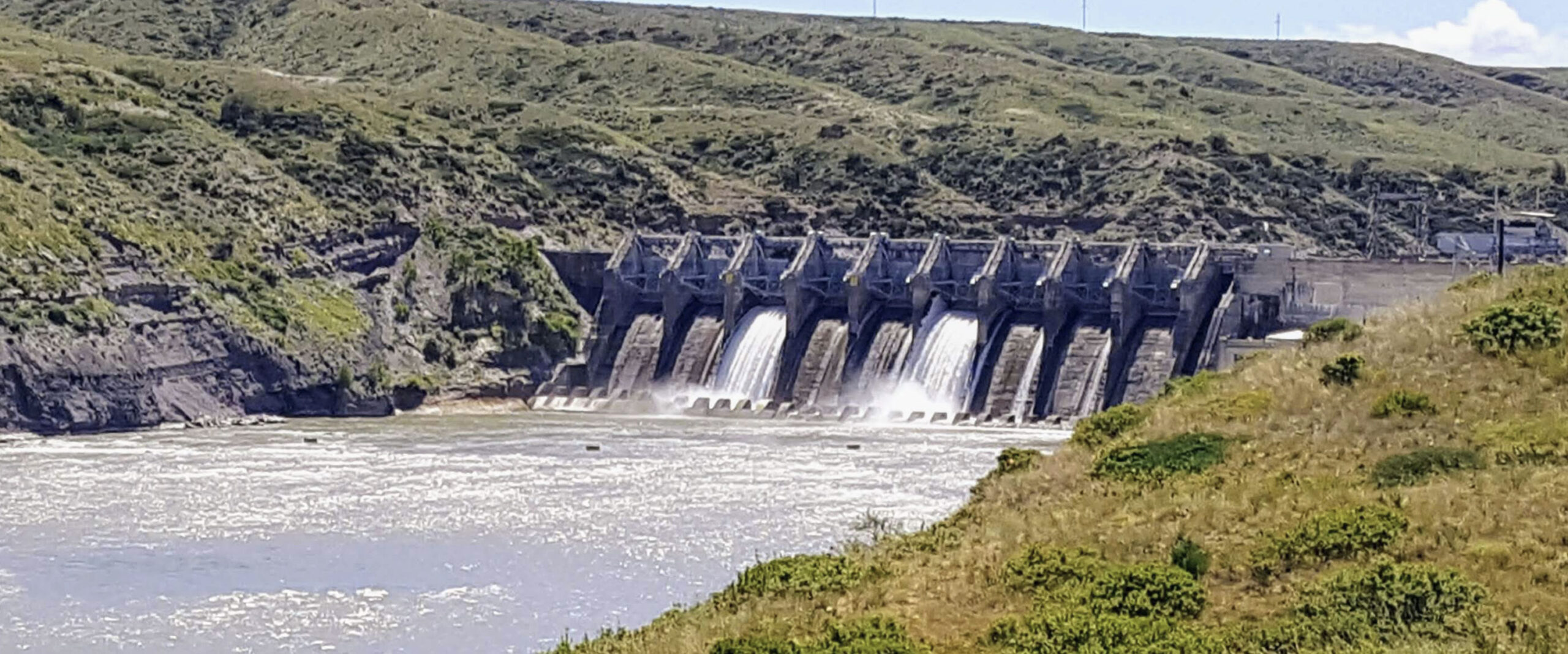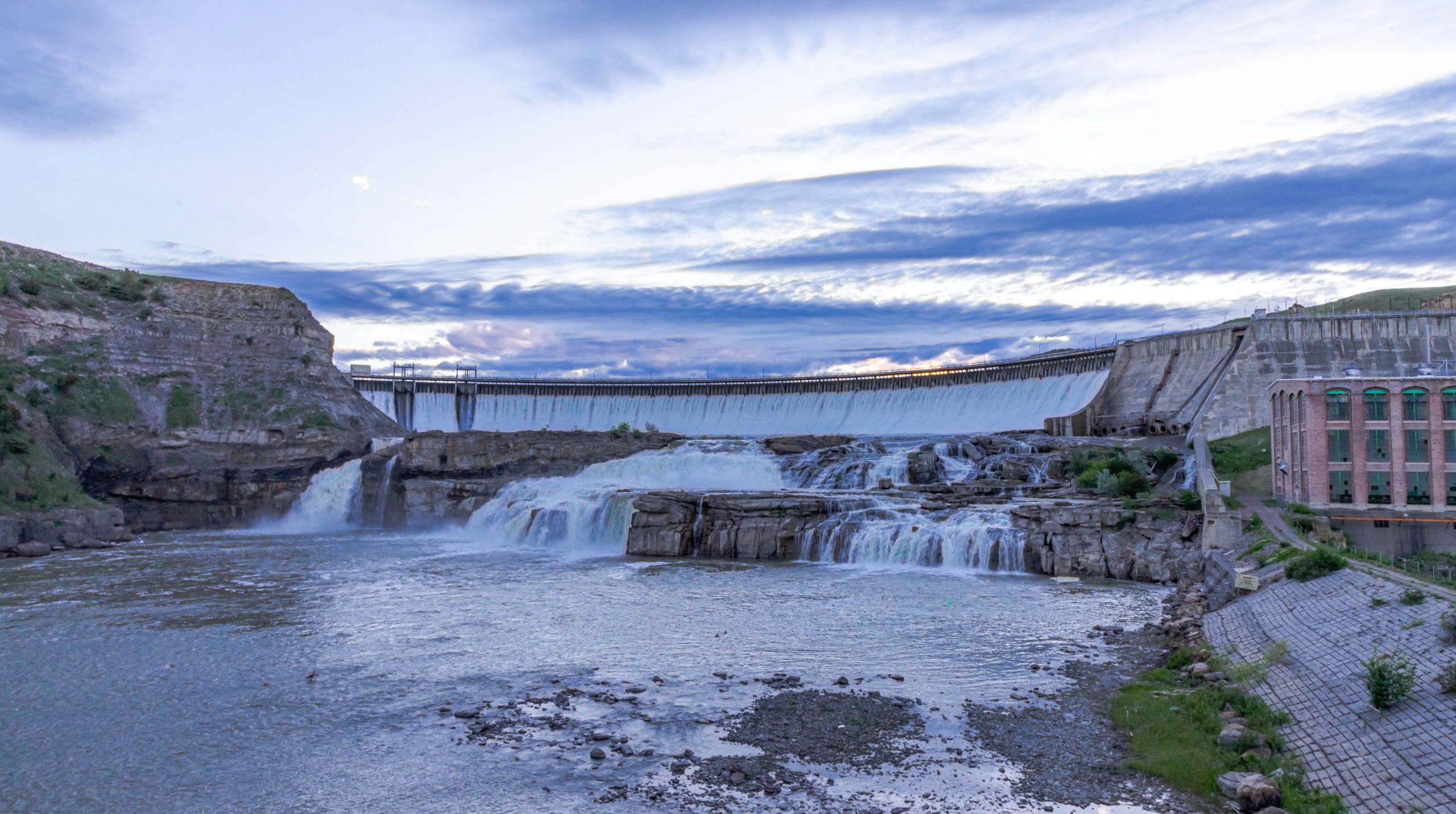
The Falls of Great Falls, Montana
The most common question asked by in-market guests, and the most difficult to answer: Where are the falls?
Listen to “We’re No Dam Experts Podcast, Episode 2: Where are the falls?” to get an insider scoop of The Falls of the Missouri River in Great Falls, Montana.
In 1804, The Corps of Discovery, a specialized Military Unit, set out under orders from President Thomas Jefferson to explore the Louisiana Purchase. The expedition arrived in present day Montana on April 27, 1805 and on June 13, Captain Meriwether Lewis was witnessing
“…the grandest sight I ever beheld…”. Captain Lewis records the experience in his journal by writing “…whin my ears were saluted with the agreeable sound of a fall of water and advancing a little further; I saw the spray arise above the plain like a collumn of smoke . . . which soon began to make a roaring too tremendious to be mistaken for any cause short of the great falls of the Missouri…”
The Falls
The Great Falls
The best view of The Great Falls is from the highest peak at Ryan Island Park, accessible from a sus...
The best view of The Great Falls is done from the highest peak at Ryan Island Park, which is accessed from a suspension bridge across the Missouri River. After traveling a two-lane road that provides views of the expansive high plains and agricultural land, you will arrive at the viewing point of the Great Falls, located at 160 Ryan Dam Road.*
There are few hints given along the way of the canyon or the river contained at the end of the road. The roar of the falls is best witnessed in the Spring, just like Captain Lewis experienced. The canyon walls show the arduous task of portaging around the Falls that laid ahead of the Expedition. Although Ryan Dam, constructed in 1915, controls the flow of the water over the falls, the enormity of The Great Falls is still impressive. The dam follows the natural break in the landscape that created the falls and was more than 80 feet [24 meters] high when first seen by Captain Lewis. Today, The Great Falls stand 148 feet [45 meters] due to the dam.
Upstream 7 miles [11 km] from the Great Falls, Crooked Falls flows over an irregular shelf, 19 feet [6 meters] high and 300 yards [274 meters] across. Untouched by a dam, and inaccessible by vehicle, Crooked Falls can be witnessed today just as the Expedition saw it in 1805.
Rainbow Falls
Rainbow Falls’ cascade of about 50 feet perpendicular was untouched when the dam was constructed i...
Recorded by Captain Lewis as “Beautifull Cascade” in his journal, Rainbow Falls’ “cascade of about fifty feet perpendicular” was untouched when the dam was constructed in 1910. You can see the magnificent Rainbow Falls at 6401 Giant Springs Road.*
A half mile [.8 km] upstream from Rainbow Falls, the smaller, 6 foot [2 meters] Colter Falls could be found. Set behind Rainbow Dam, these falls are now submerged.
Black Eagle Falls
From the top of these falls, the confluence of the Missouri River with the Sun River is visible and ...
Nearest to Great Falls’ city limits, Black Eagle Falls are 2.5 miles [4 km] above Rainbow Falls. At 26 feet [8 meters] high and 600 yards [549 meters], these falls were the first to be dammed in 1890. From the top of these falls, the confluence of the Missouri River with the Sun River is visible and from the bottom, Black Eagle Memorial Island Park gives you the closest breathtaking vantage possible. These dramatic falls are located at 5401 River Drive North.*
The Dams
Morony Dam
The town site of Morony still stands and offers a glimpse into where present-day Great Falls almost ...
The old town site of Morony still stands and offers a glimpse into where present-day Great Falls almost was. Below Morony Dam is great fishing and a natural spring, Sulphur Springs, accessible by foot or bicycle on River’s Edge Trail.
Cochrane Dam
Cochrane is the newest dam, constructed in 1958, between The Great Falls and Crooked Falls and is on...
Cochrane is the newest dam, constructed in 1958, between The Great Falls and Crooked Falls and is only seen along the River’s Edge Trail while walking or biking.
*addresses are approximate, but entering these into your GPS will get you to the general area of each overlook.




